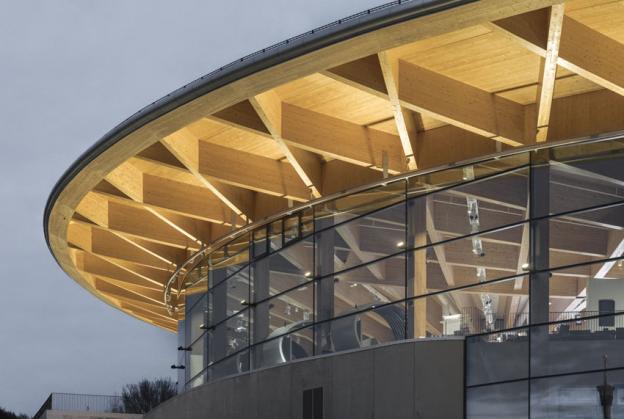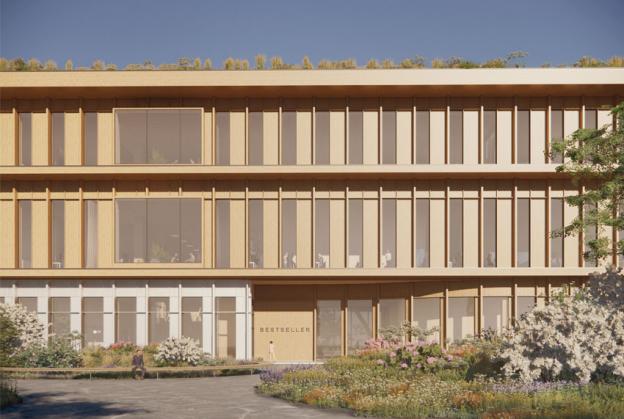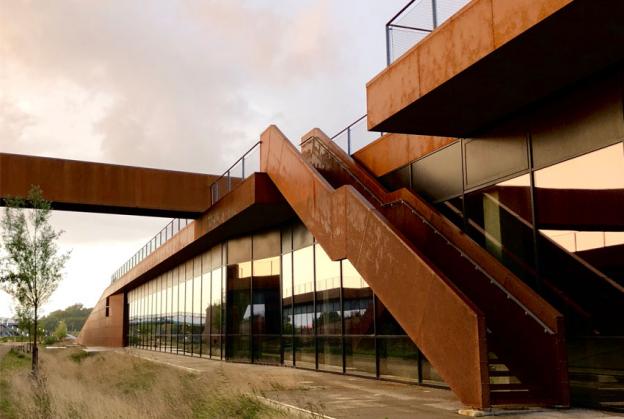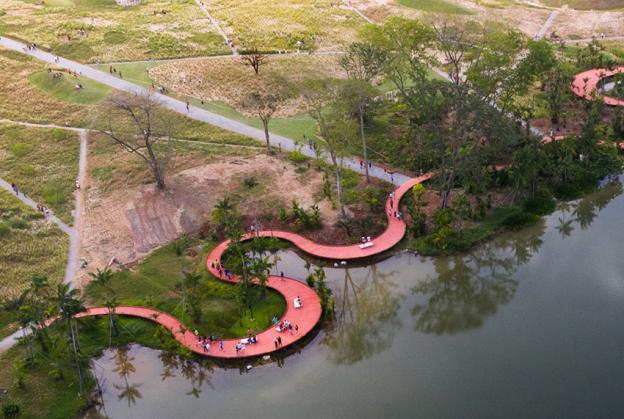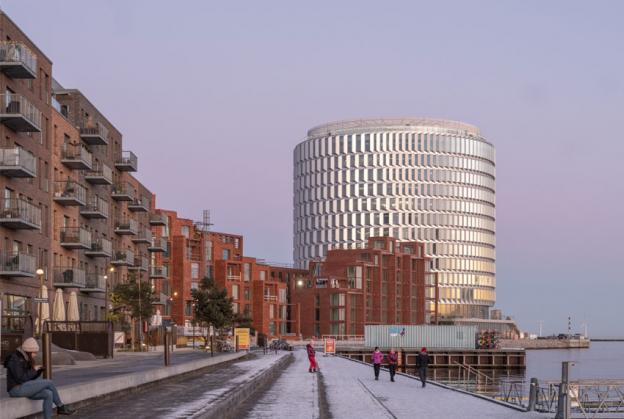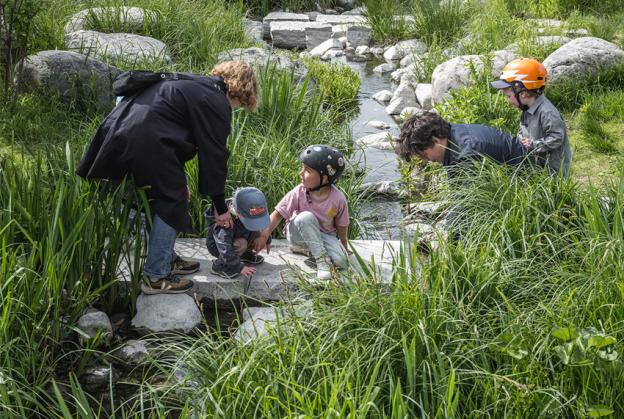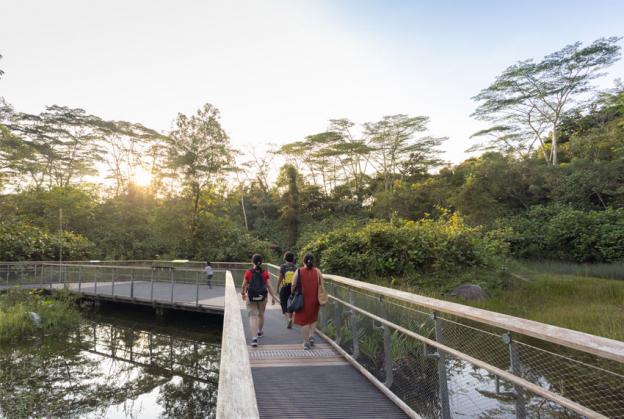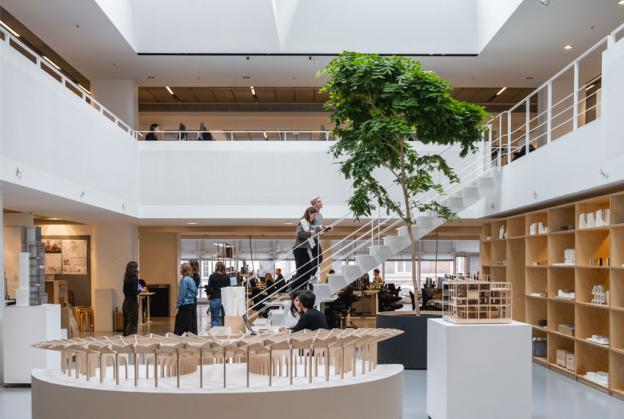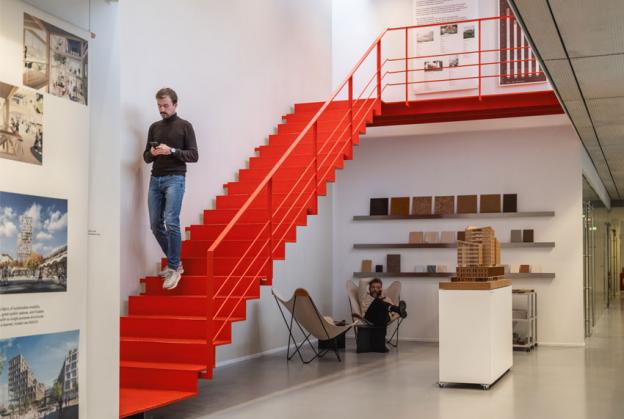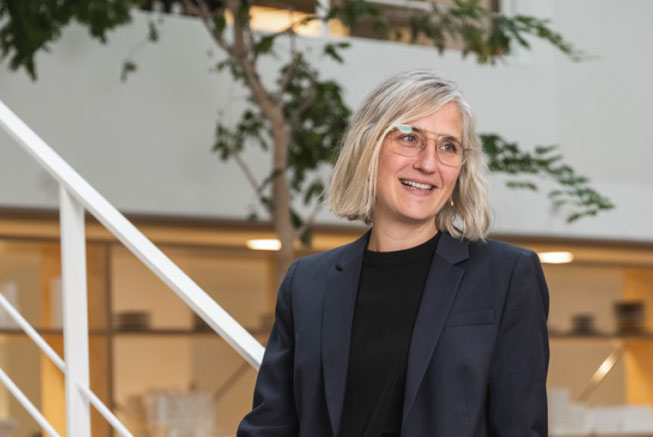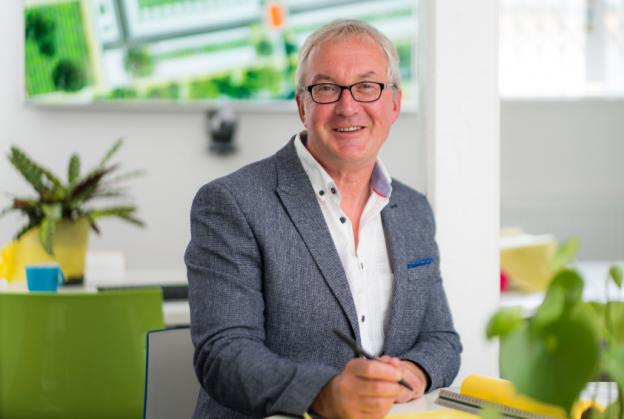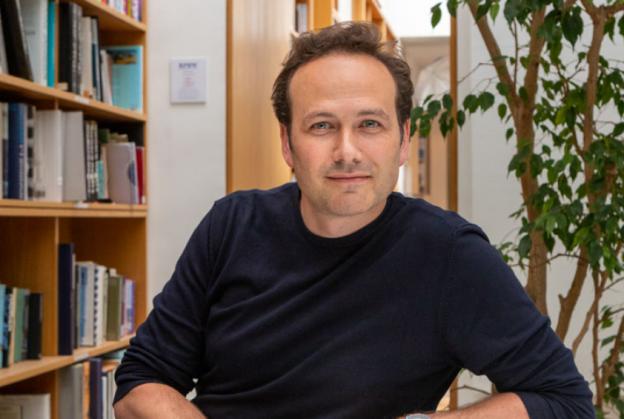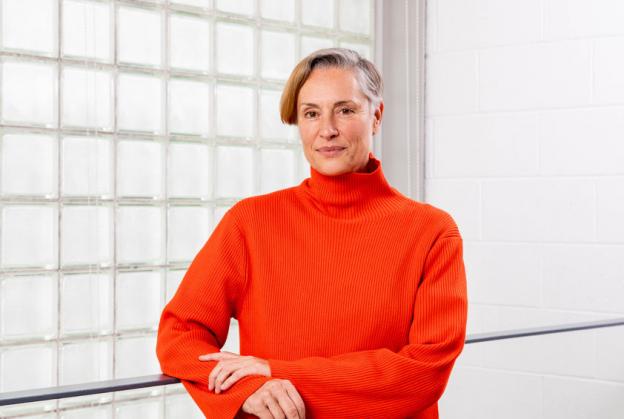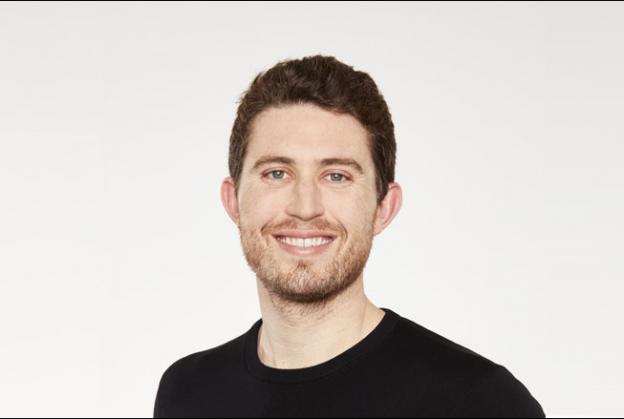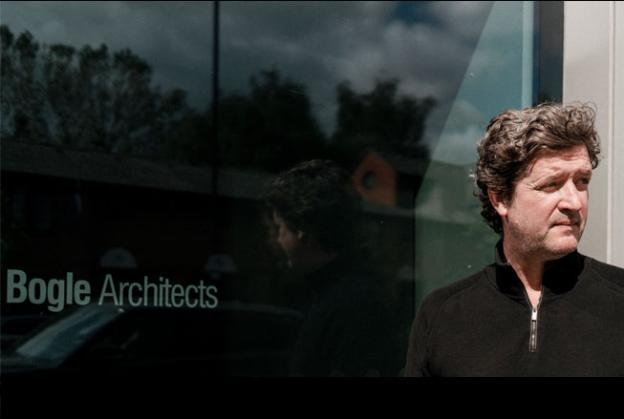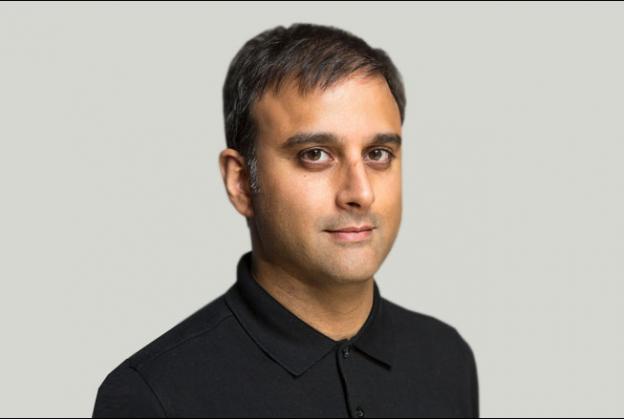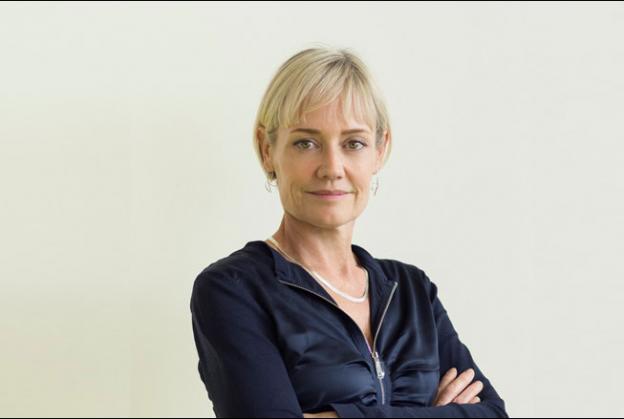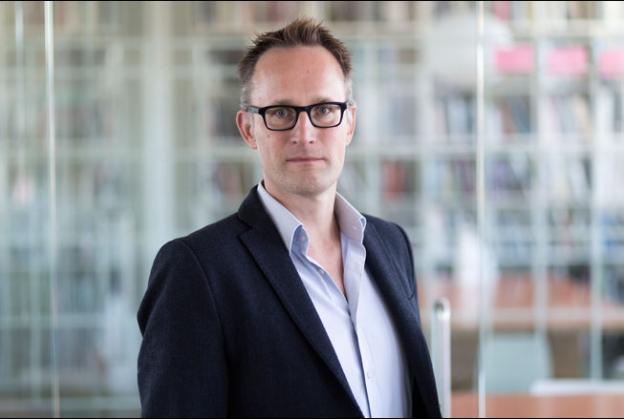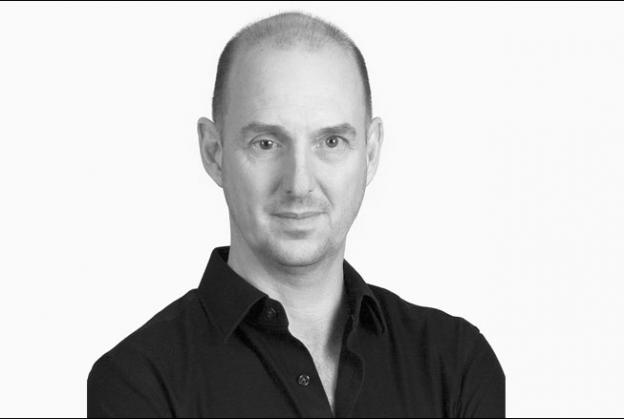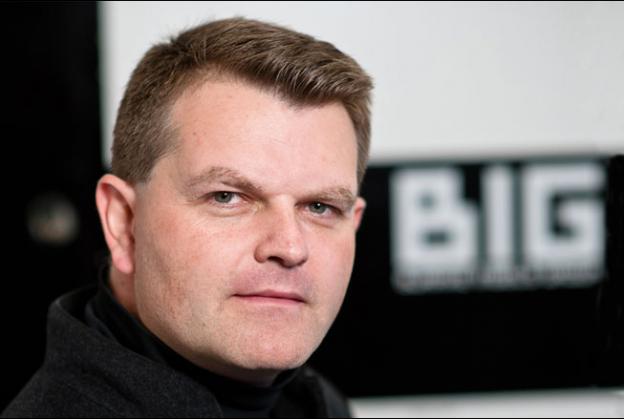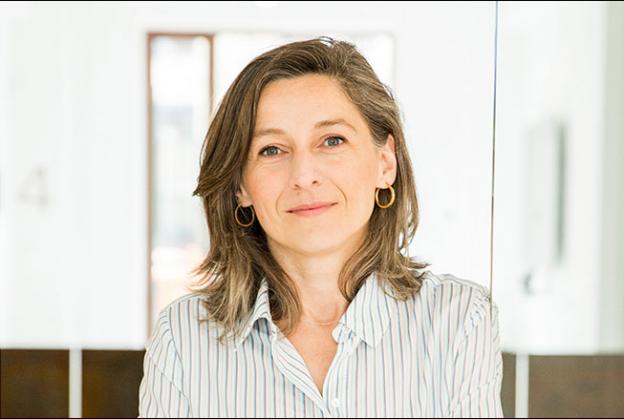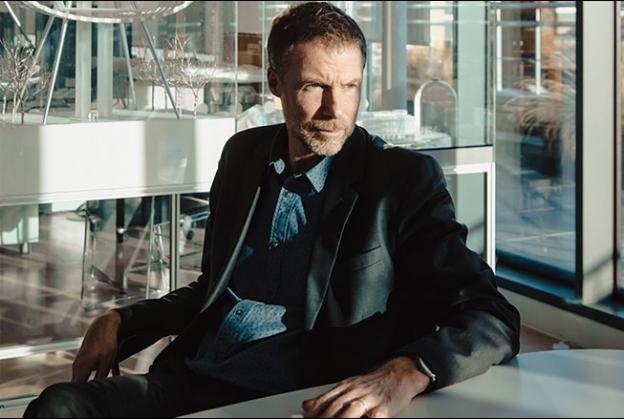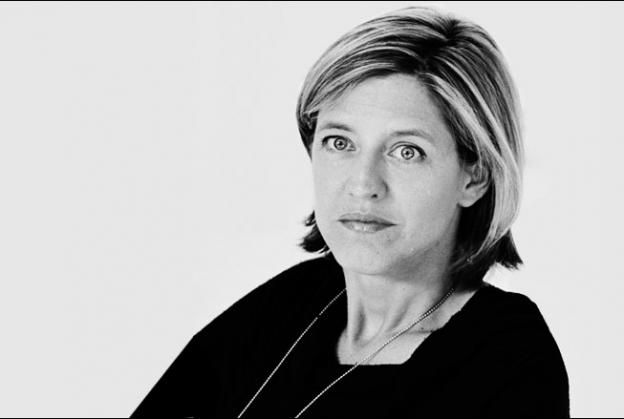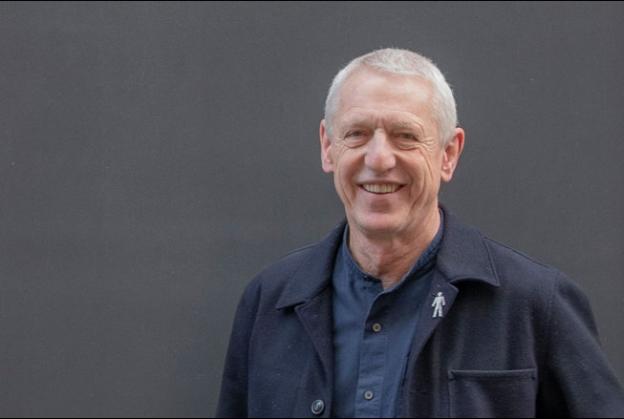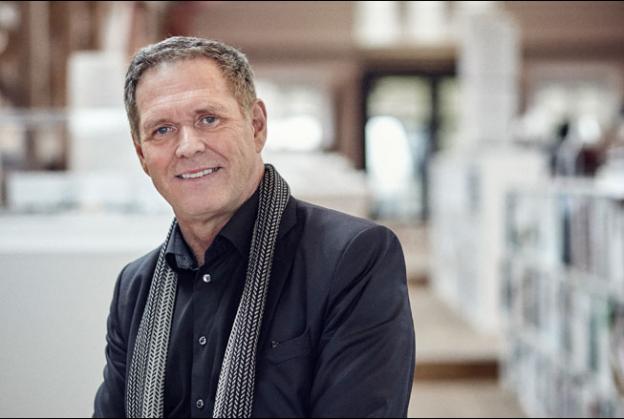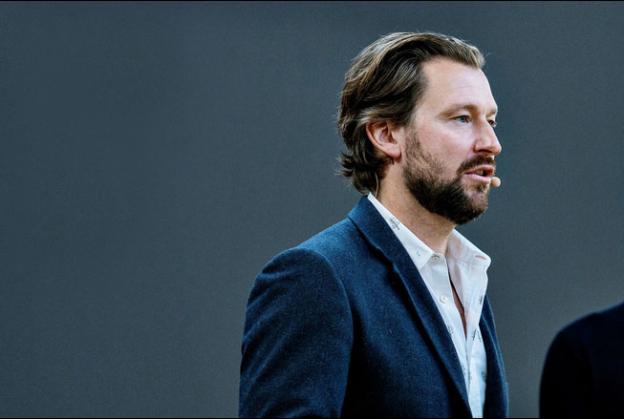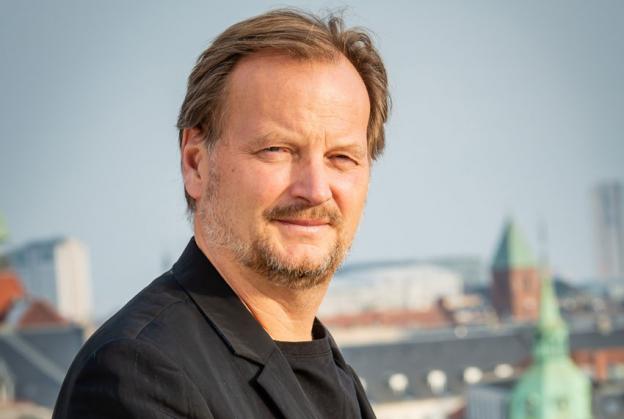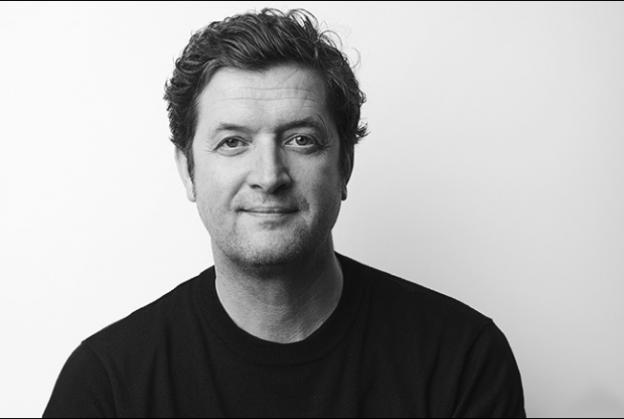Sonja Stockmarr - Global Design Director Landscape, Henning Larsen
Hello Sonja,
Newly opened in April 2024, The World of Volvo is a 22,000 sqft visitor experience centre exploring the history of this iconic brand. Inspired by Sweden’s ‘allemansrätten’ philosophy – the right to experience the outdoors and roam the land freely if done considerately – the centre’s wooden structure ‘envelopes visitors in an uplifting forest-like canopy’. From what aspects of nature has the design taken its cues, and what makes it such a memorable experience for those the centre now welcomes?
The landscape design for World of Volvo aims to provide a memorable yet traditional experience of a day in Swedish nature. The experience centre reflects the Volvo brand's deep connection to Sweden’s natural and cultural heritage, and its visitors are invited to journey through a piece of original Swedish nature. Although we couldn't incorporate cliffs and 50-metre-tall pine trees due to the load on the terraces, our intentions are clear. The centre is open, embodying the right to roam. We collaborated closely with the city to create natural areas that extend towards the river, enhancing accessibility to public green spaces where there was previously none.
The landscape surrounding the building brings the essence of Sweden to the heart of Gothenburg: delicate flowers and native plants bloom among rocky outcroppings and meandering paths. As in landscapes across the country, visitors are encouraged to enjoy the area while adhering to the principle of allemansrätten: leave no trace.
In Lelystad, on the Dutch island of Flevopolder, your design for BESTSELLER's vast Logistics Center West (LCW) represents Europe’s largest timber logistics centre. Yet, some 40% of the 155,000 sqm ongoing project is given over to its landscape – a mix of open water spaces, transitional zones, and meadows (not to mention a cultivated meadow on the complex’s 30,000 sqm rooftop). What is the thinking behind this considerable inclusion of nature?
Our primary goal across all projects is to increase biodiversity. With BESTSELLER’s Logistics Center West, we are particularly focused on enhancing biodiversity throughout the expansive site, benefitting both humans and native species. Given the scale of the building and the functional requirements of the logistics centre, integrating wetland areas into the design, untouched by human activity, is crucial. Although the building occupies significant land, our emphasis on prioritising nature ensures that we simultaneously improve the landscape, natural habitats, and overall biodiversity.
Collaborating closely with ecologists, we're ensuring the thriving presence of native species within the project's boundaries. This endeavour marks a significant milestone for us, demonstrating our capacity to document and achieve a positive environmental impact. I'm immensely proud of our efforts on this project—it truly underscores our dedication to enhancing biodiversity and fostering sustainable landscapes.
Part-park, part-utility complex, Solrødgaard in Hillerød, Denmark, sits within a 50-hectare, 1 billion DKK masterplan. Opened in 2017, the site now encompasses a recycling centre, wastewater treatment plant and administrative facility, walking trails, a birdwatching tower, and a roosting hotel for local bats. It’s unusual to mix public parks with utility plants in this way. How did Henning Larsen come up with this approach, and why? Is it working as well as hoped?
Treatment plants are often hidden and unattractive, offering nothing to their surroundings or neighbours. By inviting people to experience how wastewater is treated, rather than hiding the facility, we can create a new experience that blends into the surrounding landscape. The shape of the building forms an outdoor “classroom” for schools and others to learn about the treatment process. This is a great example of how we can integrate nature, buildings, people, and learning into one project. We see many more of these projects coming, including Aarhus Rewater.
Leaving the cool of northern Europe for the tropical climes of Singapore, we’d like to explore the impressive Jurong Lake Gardens. The site aimed to revitalise the original freshwater swamp by creating ‘a home for recreation and community activities, as well as a vibrant green lung amid a developing urban district’. How has this been achieved, and how important has it proved for Singapore and its residents since its completion in 2019?
Jurong Lake Gardens is one of the most beautiful places I have seen in Singapore; I am so proud of the team. The project is transformed from a polluted area into an attractive waterfront park. The design merges water and land, enhancing biodiversity while integrating nature-based solutions to cleanse the lakes, culminating in a children’s pool and play area. The organic design mimics water flow through the park, creating diverse experiences such as butterfly gardens, swamps, wetlands, streams, rainforests, and viewpoints. The wayfinding and details of experiences are high – and have become extremely popular. I would love to see it elsewhere – the high ambitions and the investment it takes to create experiences with nature in cities.
Next to the Czech Republic, where Henning Larsen is currently working on the redesign and landscaping of Nový Hlavák at Prague Central Station. Due for completion in 2033, this visionary project aims to reconnect the city’s historic station with Vrchlického Sady Park to create an inviting gateway to the city. What has driven the need for the design, and what are some of its key aims and features?
Our key aim was ambitious: to invite people to enjoy the station and the park. We connected various modes of traffic and lifted the roof to allow daylight and natural ventilation, celebrating the existing architecture's listed elements. By connecting the park directly to the station, we created a pleasant journey and upgraded the gateway to Prague. The role of the main station in cities is important if we are to change our mobility patterns – and Prague has, in this case, been a front runner by seeing this opportunity – driving the change of the city by improving the access to public transport for all.
Looking to the future, are there any exciting up-and-coming projects you’re at liberty to mention?
Certainly! Our focus on the impact of biodiversity is a passion of mine. We’re dedicated to taking action on both small and large projects across landscapes, buildings, and cities. Happily, landscape architecture and the role of nature in the built environment are much more central to discussions compared to five years ago.
Our portfolio is growing, and I have several personal favourites from our teams worldwide. One standout project is Jordal Sports Park in Oslo. Whenever I visit the city, I'm amazed by how it continues to evolve—not just the natural elements but the entire district. That's the beauty of landscape—it's alive and always evolving.
Another exciting project is the Rifle Range Nature Park in Singapore, where wildlife and animal design have been key drivers. During my last visit, I encountered a wild boar, validating our design approach for all inhabitants, not just humans. It's moments like these that make me proud of our work.
Additionally, we recently completed Nordø in Nordhavn, Copenhagen, Denmark. This project features our innovative modular green façade, which we're still developing. It’s promising to see its impact on reducing the heat island effect and how vertical greenery continues to be integrated into our projects.
Turning our focus to the Henning Larsen practice itself now, your website describes how the great man himself instilled ‘curiosity at our core.’ What are some of the main ways in which that manifests itself?
There isn't a single solution to increasing biodiversity in our landscapes or buildings. We continually find new ways to increase our impact, such as the green façade, the Geoplant database, and climate data sharing across zones. We need to keep learning and being curious to tackle climate change effectively.
The practice’s philosophy also proposes that a desirable future is not a destination in itself. Can you expand on that a little?
We believe that a desirable future isn't a static endpoint but rather a journey of continuous improvement. As a global studio, we're committed to addressing the challenges we face, acknowledging our responsibility to enhance our work to benefit both people and planet. Our line of work inherently means we can't offer a final, definitive solution. Instead, we must consistently pose difficult questions and explore innovative solutions. This ongoing process of inquiry and adaptation is what propels us forward.
Out of curiosity, how does the physical environment of the Henning Larsen studio embody elements of the answers to both the previous questions?
Our studio in Copenhagen is ideally located in the city, and the rooftop garden is home to bees that produce honey. In the summer the terrace is teaming with colleagues enjoying the space. The studio is a bubble filled with inspiration; it serves as a workshop space for knowledge exchange, fostering collaboration and innovation – essential for creating impact. The studio is always evolving, with no static templates for design language.
You rejoined Henning Larsen in 2020, having previously worked there from 2006 to 2017. Has a project been particularly close to your heart during your time with the practice? And why?
The first project I worked on at Henning Larsen was the design of the King Abdullah Financial District in Riyadh. This project holds a special place in my heart, as it represents a pivotal moment in my career. I still feel a sense of awe when I visit! Winning the project in 2006 gave us numerous opportunities for innovation. One I’m most proud of is the success of the public spaces and the well-documented microclimate optimisation – the district is up to 8 degrees cooler than the surrounding city.
Cultural differences and climatic considerations have always been driving forces for me. Understanding the diverse needs, desires, and opportunities within different contexts remains essential, especially in light of climate change. Planning for both immediate and extreme future scenarios while striving to enhance our impact and increase biodiversity is crucial in addressing the greatest crisis facing humanity. In recent years, my focus has shifted towards nature and biodiversity, and when we succeed in convincing our clients to raise their biodiversity ambitions it fills me with immense pride.
We notice that in 2017, you were involved with the Danish Broadcast Corporation presenting a series about controversial architecture entitled ‘Arkitektur der deler vandene’ (which translates literally as 'architecture that divides the waters’. Can you tell us what this entailed?
It entailed architecture with inbuilt conflicts for many reasons - be they political, delays, the architecture, too expensive, constructability, and so on.
I travelled around the world exploring architecture with different ambitions. It was an extremely inspiring time for me, gaining access to unique architecture, expanding my global network and opening doors in Denmark, Norway, and Sweden, giving me a voice in the landscape, architectural, and political scenes.
On a more personal level, where does your obvious love of nature spring from, and how has it led to your specialisation in landscape design?
I grew up in a family that loves nature. As children, we would go out and collect vegetables, snails, and fish, which showed me the importance of nature and the opportunities within. We explored places by bike or on foot, investigating local species, and waking up early to hear the birds. It sounds idyllic, and now I look back on it extremely fondly!
We were always growing and experimenting with vegetation and food. I still do! I have what I call an “exploration lab,” a small piece of land where I experiment, gather and spread native herbs, allowing nature to dictate the rhythm. This year, heavy spring rainfall transformed part of the land into a lake, attracting birds, ducks, frogs, and loads of insects. I love the surprises, the failures, the changes throughout the year, and the success when new herbs show up, even when a hedgehog leaves a poo on my doorstep.
Describe your idea of a relaxing weekend when time allows!
All of the above – a weekend in nature. There are always things to do, to explore, to see, to smell, to feel, to eat, and to learn.
And lastly, Henning Larsen has been a valued member of Tenderstream for 14 years now, so we hope we’re doing something right! Has the practice found the service valuable over the years, and if so, how has it proved helpful?
I review Tenderstream almost every week and find it informative. It helps us understand which markets are moving and in what direction, ultimately supporting our global work.
Interview by Gail Taylor, Features Editor
IMAGE CREDITS
1 World of Volvo– Gothenburg, Sweden © Henning Larsen Architects. Image Rasmus Hjortshøj
2 BESTSELLER Logistics Center West- Lelystad, Netherlands© Henning Larsen Architects
3 Solrødgaard Water Treatment Plant - Hillerød, Denmark © Henning Larsen Architects. Photo Daniel Baumann
4 Jurong Lake Gardens - Singapore © Henning Larsen. Photo Finbarr Fallon
5 Nový Hlavák Construction Site - Prague © Henning Larsen. Image Rasmus Hjortshøj
6 Jordal Sports Park - Oslo, Norway © Henning Larsen Image Rasmus Hjortshøj
7 Rifle Range Nature Park - Singapore © Henning Larsen. Photo Finbarr Fallon
8 Henning Larsen Studio - Copenhagen. © Henning Larsen. Image Rasmus Hjortshøj
9 Henning Larsen Studio - Copenhagen. © Henning Larsen. Image Rasmus Hjortshøj
